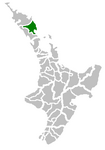Whangarei
This is your travel guide for Whangarei
1 : Visit Whangarei Falls [2 hrs]
Explore the picturesque Whangarei Falls, a stunning waterfall nestled in lush native bush. Take a leisurely walk along well-maintained tracks to various viewing platforms for breathtaking photo opportunities. Learn about the cultural significance of the falls to the local Maori people and immerse yourself in the peaceful natural surroundings.
2 : Discover Whangarei Town Basin [3 hrs]
Stroll around the vibrant Whangarei Town Basin, a charming waterfront area showcasing heritage buildings, galleries, and boutique shops. Enjoy a delicious meal at one of the waterfront restaurants or cafés while overlooking the marina. Visit the Claphams Clock Museum or the Art Museum for a dose of local history and culture.
3 : Hike Mount Parihaka [4 hrs]
Embark on a rewarding hike up Mount Parihaka, offering panoramic views of Whangarei city, the harbour, and surrounding landscapes. Explore the native bush trails and discover the remains of historical fortifications from the Maori Wars. Pack a picnic and enjoy a scenic lunch at the summit while taking in the stunning vistas.
4 : Relax at Ocean Beach [2 hrs]
Unwind at the serene Ocean Beach, renowned for its golden sands and rolling surf. Take a refreshing swim in the crystal-clear waters or relax on the beach with a good book. Enjoy beachcombing for shells and other treasures, or simply soak up the sun in this idyllic coastal paradise.
5 : Visit Kiwi North [2 hrs]
Explore the fascinating Kiwi North museum, home to exhibits on natural history, Maori culture, and colonial heritage. Get up close to native wildlife at the Whangarei Bird Recovery Centre and learn about efforts to conserve endangered species. Engage in interactive displays and educational programs suitable for visitors of all ages.
Background Info
Weather
Whangarei experiences a temperate climate with warm summers (average temperature of 20-25°C) and mild winters (average temperature of 10-15°C). The region receives regular rainfall throughout the year, with the wettest months typically between May and August. Humidity levels vary but can be high, especially during the summer months. Air quality is generally good in Whangarei due to its clean, coastal environment.
Language
English and Maori are the two official languages spoken in Whangarei. English is widely used for everyday communication, while Maori holds cultural significance and is also taught in schools to preserve indigenous traditions.
Cost Of Living
The cost of living in Whangarei is relatively lower compared to larger cities in New Zealand. Housing prices, groceries, and transportation costs are more affordable, making Whangarei an attractive choice for those seeking a relaxed lifestyle without the high expenses of urban centers.
Whangarei District – territorial authority district in New Zealand’s Northland region
Location: Whangarei, Northland , New Zealand![]()
Summary: Whangarei District Summary
Map: Map of Whangarei District
Weather: Whangarei District Forecast
Population: 91,400 (2018)
Area: 2,854.32 sq km
Coordinates: -35.719, 174.309
Timezone: (UTC+12:00) New Zealand Time (Auckland)

